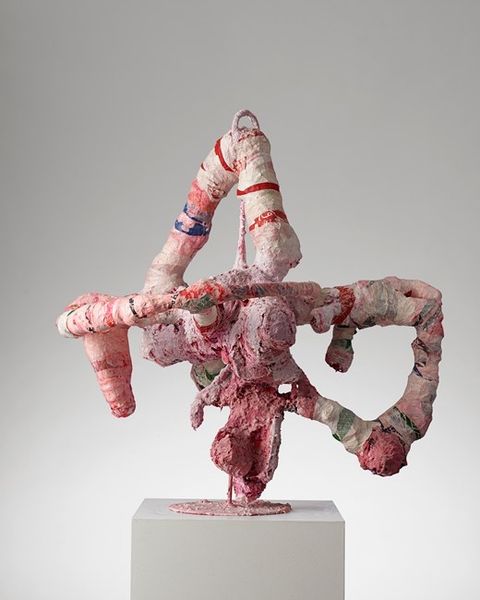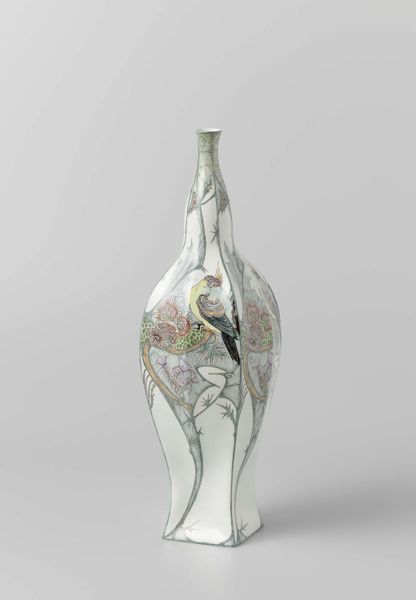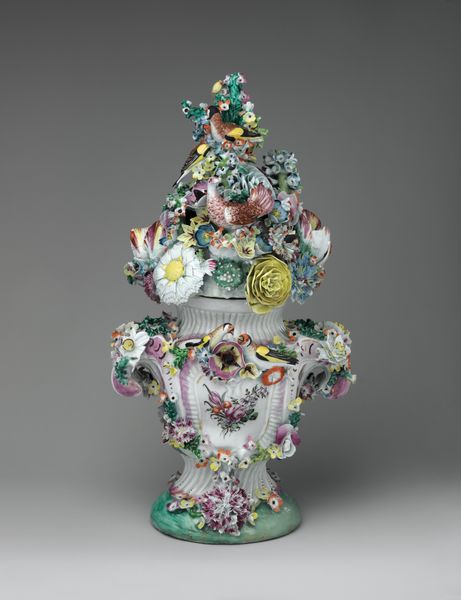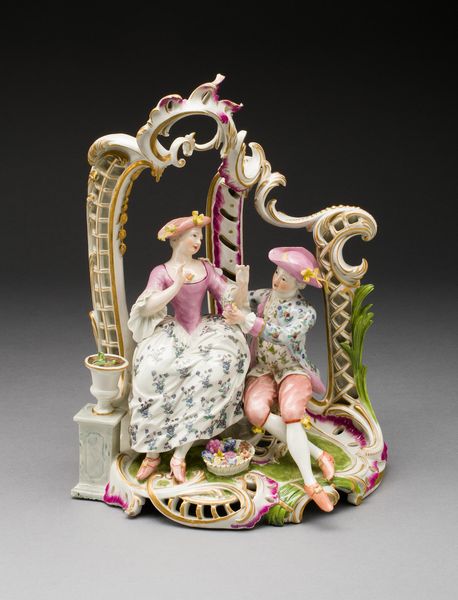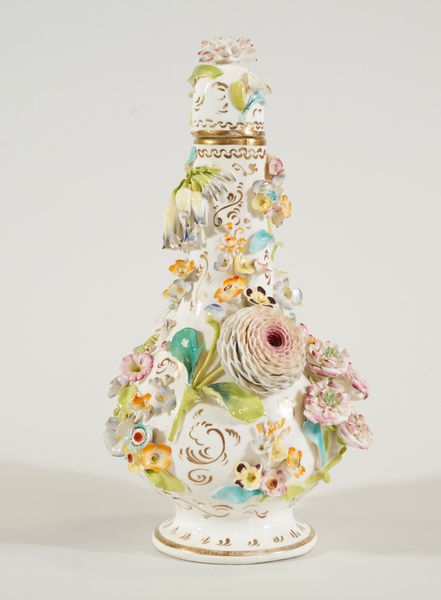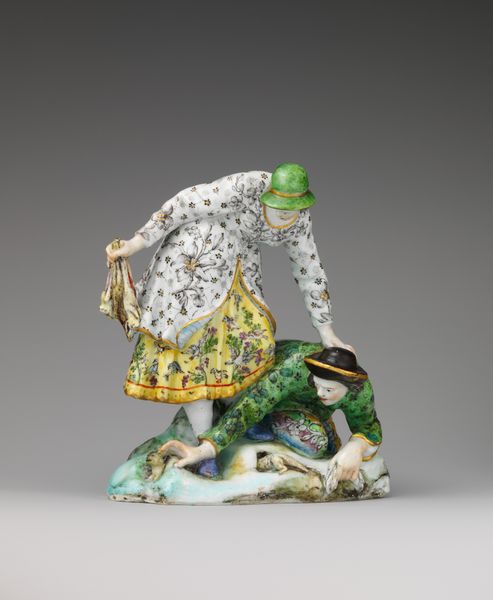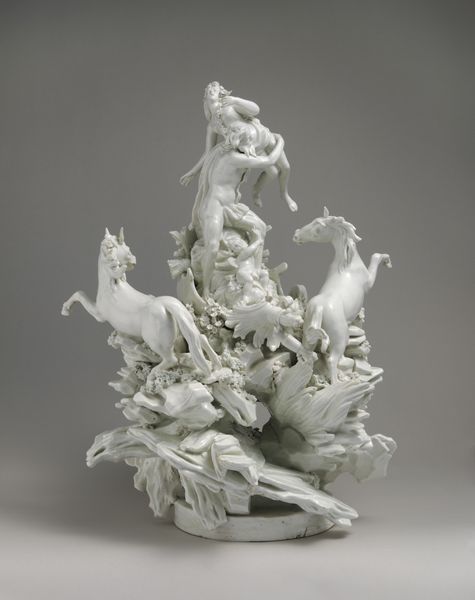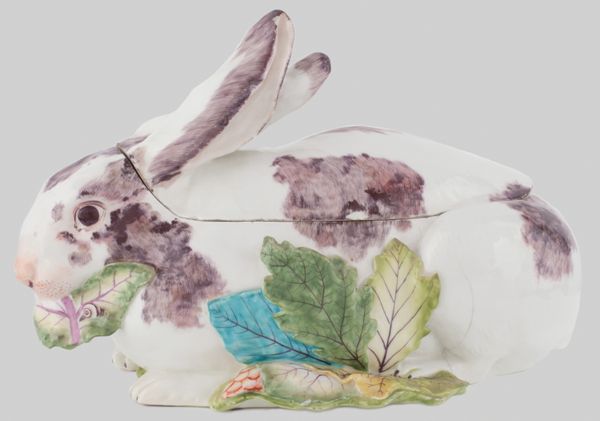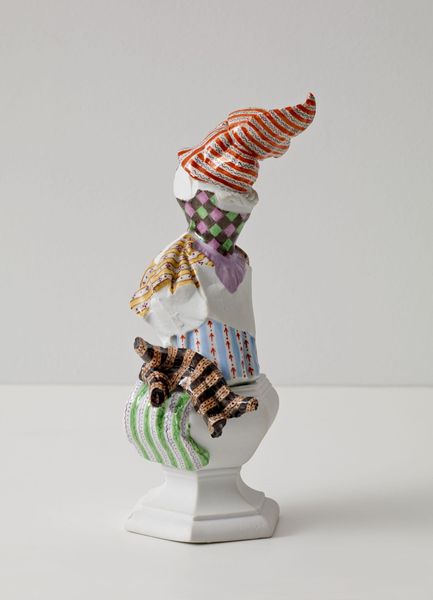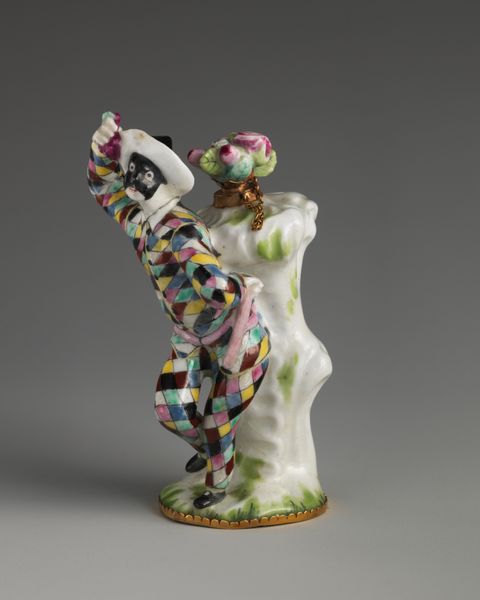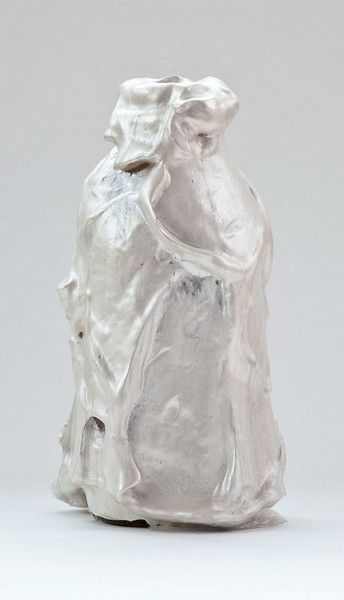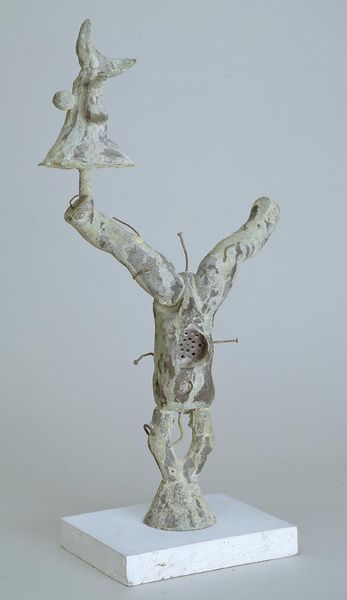
ceramic, porcelain, sculpture
#
gouache
#
ceramic
#
porcelain
#
figuration
#
sculpture
#
ceramic
#
decorative-art
#
rococo
Dimensions: Overall: 8 1/2 × 4 3/4 in. (21.6 × 12.1 cm)
Copyright: Public Domain
Editor: This delicate porcelain sculpture, called "Crested Pheasant", was created by Derby Porcelain Manufactory between 1750 and 1760. It has such a whimsical and almost fragile quality. How do you interpret the imagery in this piece? Curator: It immediately evokes a sense of Rococo sensibilities – the pastel colours, the asymmetrical composition, the floral details. But look closer; notice how the pheasant isn’t simply perched, it's almost emerging from a fantastical, floral-covered tree stump. It speaks to the 18th-century fascination with exoticism, nature, and the blurring of boundaries between the real and the imagined. Editor: That's interesting! The way you describe the pheasant "emerging" gives the statue a more narrative feel. I hadn't thought about exoticism playing a role, though that makes perfect sense. What's the cultural weight of such imagery? Curator: Porcelain itself, at this time, was highly prized and exotic to European eyes. By representing the natural world through porcelain, the artist, intentionally or not, captures both its beauty, but also possession. The very act of shaping and colouring porcelain serves to capture an essence of life. Editor: So, it's not just decorative but communicates something about humanity's relationship to the natural world and the desire to contain it, especially exotic flora and fauna. That's quite a bit more complex than I first thought. Curator: Indeed. It invites us to reflect on the desire to catalogue and claim nature, and the ways in which that drive reveals itself through art and material culture. Look at how later imperial powers projected cultural norms through "gifts" of fine porcelain... Food for thought! Editor: I'm definitely seeing this piece with new eyes now. Thank you! Curator: My pleasure. The joy of iconography lies in peeling back the layers and revealing the hidden stories behind seemingly simple images.
Comments
No comments
Be the first to comment and join the conversation on the ultimate creative platform.
